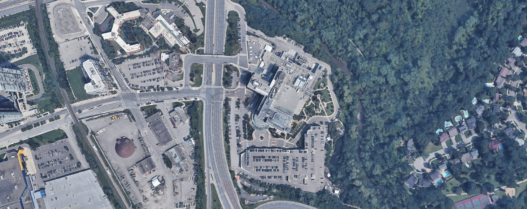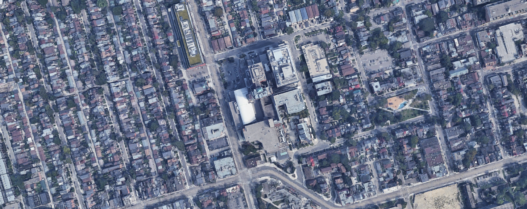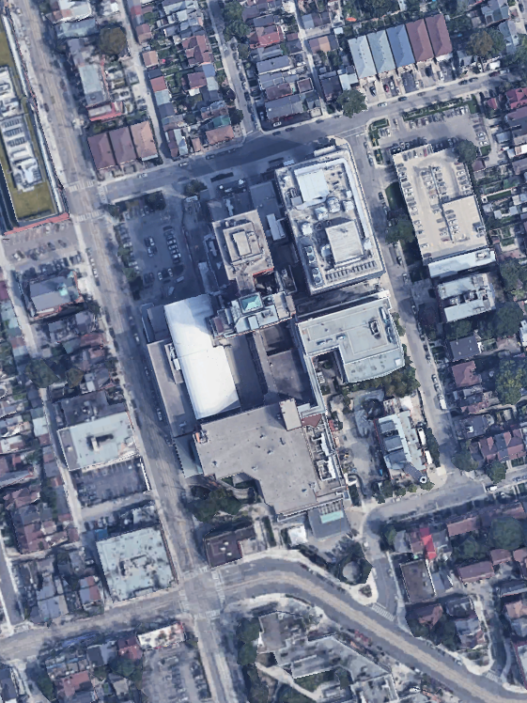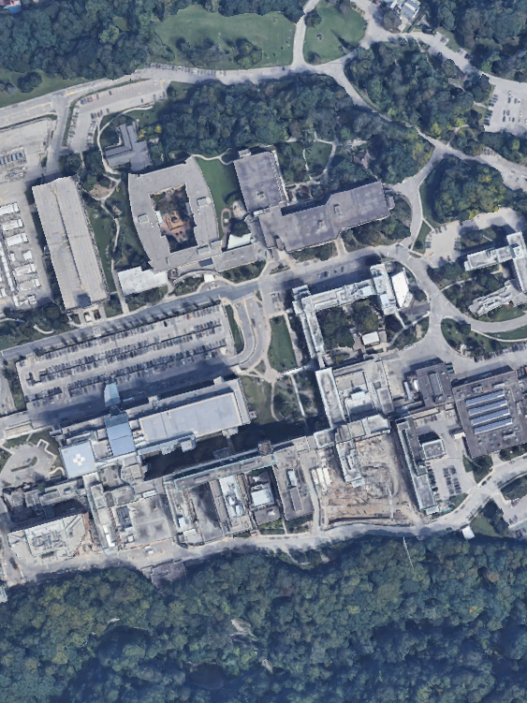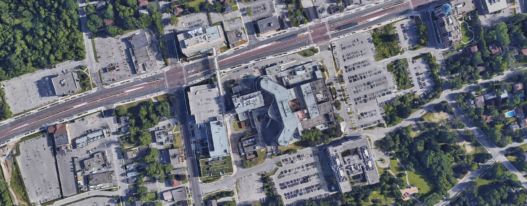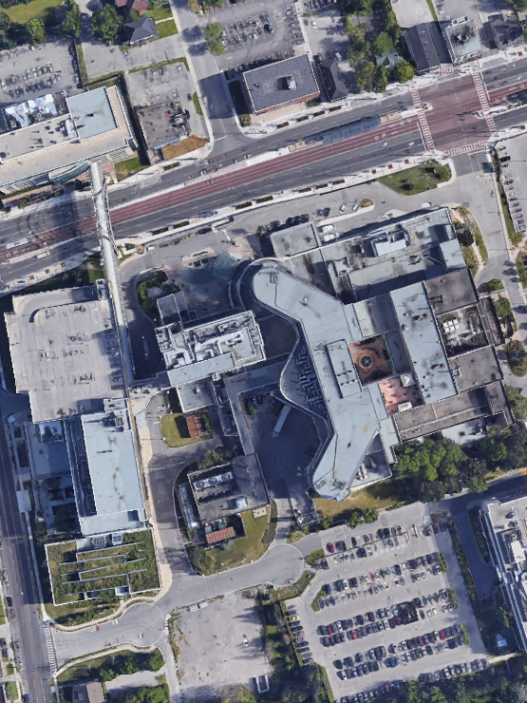Nanaimo Regional General Hospital stands between forest and ocean on Vancouver Island’s eastern corridor, overlooking the Strait of Georgia. It is the only full-service hospital between Victoria and Campbell River and serves more than 200,000 people across towns, coastal communities, and rural reserves. Increasingly, the hospital has become a regional lifeline—one that may be absorbing more demand than it was ever intended to manage.
At its core is the emergency department, operating around the clock. It provides urgent care for trauma, psychiatric crises, chronic illness, and everyday health issues. But in recent years, it has also taken on roles that extend well beyond the traditional scope of emergency medicine. A rise in emergency wait times may be less about inefficiencies within the hospital and more a reflection of how external pressures—from primary care shortages to mental health system gaps—are being funneled into a single access point.
The emergency department now potentially functions as a catch-all for many issues that could once be addressed elsewhere. As upstream capacity in family medicine, long-term care, and addiction services has weakened, Nanaimo’s emergency department may have become the default setting for patients with nowhere else to go.
A Dispersed Region Concentrated in One Facility
The catchment area of Nanaimo Regional General Hospital spans a wide geographic area. Its service region stretches south to Duncan and the Cowichan Valley, west to Port Alberni, and north through Parksville and Qualicum Beach. In theory, each of these communities has some degree of health infrastructure. In practice, staffing shortages and limited specialty services mean patients from these areas may frequently be redirected to Nanaimo.
Emergency departments in nearby towns may shut overnight or become overwhelmed, prompting diversions. Island-based and remote coastal communities often lack diagnostic tools and may depend on ferry or air transport to reach the hospital. With no equivalent facility nearby, the responsibility to serve these populations may increasingly fall to Nanaimo.
This regional dependency potentially transforms a mid-sized hospital into a central hub, even though its infrastructure and staffing were not scaled for that role. On paper, Nanaimo Regional General Hospital is a community facility. In function, it is becoming a de facto regional medical center.
Designed for Emergencies Only
Nanaimo’s emergency department manages walk-ins, ambulance arrivals, inter-facility transfers, and complex referrals. On busy days, the department may operate at nearly twice its intended capacity. Patients may wait in hallways, chairs, or overflow zones for hours or even overnight.
What was originally meant to be a site for acute stabilization has evolved into a holding space for both admitted patients and those awaiting community-based follow-up. Non-urgent conditions such as minor infections, musculoskeletal complaints, or medication issues are assessed in the same space as strokes, sepsis, and overdose.
This operational blurring between emergency medicine and general access care may reflect how overstretched the broader system has become. As care options in the community recede, the emergency department becomes the last and most dependable option—even for needs that were never meant to arrive there.
Population Aging and Increased Medical Complexity
One of the more consistent contributors to rising emergency volume is the region’s demographic profile. Central Vancouver Island has a senior population significantly above the provincial average, with nearly one in four residents over age 65. That number is projected to grow.
Older adults tend to present with more complex and interrelated medical concerns. A simple fall may uncover dehydration, electrolyte imbalance, or cardiac irregularities. A cough might escalate into pneumonia in someone with multiple chronic conditions. These patients often require diagnostic imaging, cardiac monitoring, and lab work—and may be more likely to need inpatient admission.
When inpatient units reach capacity, these patients often remain in the emergency department for extended periods. Hallways may serve as temporary wards. Emergency nurses provide inpatient-level care in conditions that are neither private nor optimized for prolonged recovery.
The presence of multiple boarded patients may lead to further bottlenecks, delaying triage for others and stretching clinical staff across incompatible priorities.
Decline of Accessible Primary Care
A second, and increasingly visible, factor is the reduced availability of family medicine. More than 20 percent of residents in the region do not have a family doctor. Walk-in clinics have closed or reduced hours. Those with a regular physician may struggle to secure same-day or even same-week appointments.
This decline may have broad implications for how and why patients use emergency care. In many cases, people with low-acuity conditions—ear infections, mild fevers, or medication concerns—turn to emergency departments because they perceive no other viable alternative.
This redirection of routine health issues to emergency care may create significant inefficiencies. It may lengthen wait times for all patients and potentially increase resource use per visit. The emergency department, which is optimized for rapid triage and acute stabilization, becomes a proxy for the collapsed infrastructure of primary care.
Mental Health Needs Outpace Capacity
The emergency department has also absorbed a growing share of the province’s mental health burden. In Nanaimo, as in many parts of British Columbia, emergency rooms have become the default destination for patients experiencing psychiatric crises, addiction-related episodes, and behavioral instability.
This trend is likely influenced by several factors. The opioid crisis has introduced a steady volume of overdose-related emergencies. Methamphetamine use, visible on the streets of Nanaimo and surrounding towns, contributes to acute psychosis and behavioral dysregulation. Homelessness and unstable housing may also intensify both the frequency and severity of psychiatric presentations.
The hospital has a dedicated psychiatric inpatient unit and crisis response team, but capacity is limited. Patients in acute distress may wait hours—or even overnight—in general emergency spaces. These environments are often overstimulating and lack the privacy, quiet, and specialized staff necessary for effective de-escalation.
In many cases, patients may be discharged without a follow-up plan, only to return days later in similar or worsening condition. Without comprehensive community-based mental health programs, the hospital emergency department may remain the only consistent point of access.
Substance Use as a Chronic Emergency
Substance use, particularly involving fentanyl, methamphetamine, and alcohol, remains a routine and deeply entrenched feature of emergency care in Nanaimo. Patients may present in overdose, withdrawal, psychosis, or varying combinations of the above. Emergency staff provide immediate interventions—naloxone, benzodiazepines, intravenous fluids—but the available treatment ends there.
The hospital lacks an on-site detox unit. Inpatient addiction treatment programs are limited and frequently full. Community-based outpatient options exist but may be oversubscribed or difficult to access for patients without stable housing or support.
As a result, many individuals cycle through the department multiple times, often within days. This revolving-door pattern reflects a broader system that can stabilize but not sustain recovery. The emergency department may be where patients are revived, but it is not where long-term healing happens.
The toll on staff may be significant—not just clinically, but emotionally. The inability to offer more than short-term stabilization may contribute to frustration and burnout among nurses, physicians, and allied professionals alike.
Boarding: The Hidden Crisis
One of the most visible symptoms of a system under stress is the boarding of admitted patients in the emergency department. At Nanaimo Regional General Hospital, this practice has become standard rather than exceptional.
Patients who have been admitted to the hospital but for whom no inpatient bed is available remain in the emergency department for hours or days. These individuals still require full nursing care, medications, and monitoring. But their presence consumes emergency resources, limits bed turnover, and slows the intake of new arrivals.
This practice may contribute to longer ambulance offload times, delayed triage for walk-in patients, and prolonged wait times across all acuity levels.
Nowhere to Discharge
Inpatient capacity may be constrained not just by active medical need, but by the growing number of alternate level of care patients—those who no longer require hospitalization but cannot be safely discharged due to gaps in the community.
These patients might be awaiting long-term care placement, assisted living, home care packages, or supportive housing. Until those supports are available, they occupy inpatient beds. This creates a domino effect: emergency patients cannot be admitted, boarded patients cannot be moved upstairs, and triage becomes bottlenecked.
Solving this issue may require more than hospital beds. It would likely involve substantial investments in long-term care, community nursing, and housing infrastructure.
Staffing Strains Compound Every Pressure Point
The demands on clinical and support staff are rising across every department. Nurses are frequently asked to manage not only high patient volumes but also patients with overlapping physical, mental, and behavioral conditions. Physicians navigate complex triage decisions without sufficient downstream support.
Support roles are under similar pressure. Unit clerks must coordinate around constant bed shortages. Porters shuttle patients through crowded hallways. Security guards respond to increasing behavioral incidents. Social workers manage discharge logistics in a system with few placement options.
These dynamics may erode morale and contribute to recruitment and retention challenges. Overtime is common. Sick leave is rising. Vacant positions are harder to fill, particularly in smaller cities. The cumulative effect may be a slow but steady depletion of system resilience.
A Facility With No Margin for Disruption
What distinguishes Nanaimo Regional General Hospital from urban facilities is the absence of nearby alternatives. In major cities, patient volume can be distributed across multiple hospitals. In Nanaimo, when emergency departments in Ladysmith, Duncan, or Port Alberni close or reach capacity, their patients are redirected to Nanaimo.
The hospital also accepts inter-facility transfers, air ambulance cases, ferry arrivals, and specialized cases requiring imaging or surgical intervention. It is the only hospital in its region equipped for trauma and advanced diagnostics. There is no nearby facility to share the load.
This reliance on a single node may be efficient under ideal conditions, but it leaves no room for unplanned surges, staffing crises, or infrastructure failures.
Emergency Care Without Boundaries
The cumulative effect of these trends is an emergency department that now handles everything—emergencies, routine care, psychiatric stabilization, addiction management, and inpatient overflow. It has become not only the most reliable point of access, but in many cases the only one.
Long wait times may no longer reflect a temporary surge. They may reflect a permanent shift in how, where, and why patients enter the healthcare system. The lines between emergency and general care are blurring. The emergency department is no longer just a response unit. It is the system’s pressure valve, and sometimes its final stop.
The Big Picture
Nanaimo Regional General Hospital’s emergency department was designed for immediate, time-sensitive care. Today, it may serve as the intake point for issues that reflect far deeper and broader systemic fractures.
Each delay may signal a missing family doctor. Each boarded patient may represent an unavailable long-term care bed. Each psychiatric hold in a hallway may reflect a lack of mental health infrastructure. And each return visit may point to the limits of short-term stabilization in the absence of long-term intervention.
If these patterns persist, the concern is not only that wait times will remain high. It is that emergency medicine itself may be redefined—from a specialized service to a universal fallback. And without changes to staffing, infrastructure, and community-based care, this fallback may no longer be able to stand.








